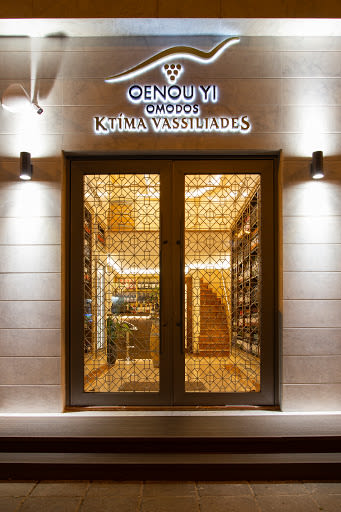en
 English
English
 Deutsch
Deutsch
 Italiano
Italiano


From Hesiod to Homer and from Richard Lionheart to Shakespeare, references to the “Cypriot nama” vary and testify that Cyprus has been “evoenos” (producing fine wine) since antiquity. Small flasks, discovered by archaeologist Porfyrios Dikaios in Erimi, ornate mosaics in the house of Dionysus in Paphos, dozens of medieval wine presses in Cypriot villages, and the world’s oldest protected wine, the Commandaria, all testify to this long-standing wine tradition. Vineyards are cultivated throughout Cyprus and many areas produce fine wines. However, the name and grace are held by “Krasochoria” (Cyprus’ wine villages), a total of 20 wine cultivated villages, on the south slopes of the Troodos mountain range. Troodos mountain range’s geological peculiarity, in combination with mild, Mediterranean climate, result to exceptionally tasteful and aromatic wines, produced from indigenous varieties that had been flourishing on the island for thousands of years. Xynisteri, Mavro, Maratheftiko, Giannoudi, Lefkada, are only a few of the island’s varieties that give wines of Protected Geographical Indication, according to European quality systems specifications. The relationship between wine and Cyprus is also evidenced by the ornate, impressive mosaics that adorn the luxurious houses of the Romans in Paphos. The most known oenological character mosaics are those found in the house of Dionysus, which took its name from the mosaics themselves. The house may have belonged to a Roman official or a prominent member of the community. Among the various images that decorate the mosaic floors, one finds scenes of vine harvesting and vineyards, as well as mythological images, such as the triumph of Dionysus and Icarus. The period during which the winemaking process flourished was Frankish rule. When the island was occupied by the Knights Templar, la Commanderie – the military administration of the island – gave its name to a Limassol district village that produced a sweet nectar, the Commandaria. European exports begun and Cypriot Commandaria was upgraded into an internationally renowned wine that even French nobles and kings glorified. This sweet wine was preferred and praised by many foreign travelers and kings who arrived on the island, calling it “treasure” and “sweet as a Muse”. Among the many references, Elizabeth Browning writes: “The wine of Cyprus is as sweet as the lyre of the Muses. It has the colour of a lion or Rhea and shines much better than even the eyes of the Pafos goddess [Aphrodite]. It is as light as her step, and the honey produced by the black bees of Hymettus cannot exceed the sweetness of the wines of Cyprus”. During the Turkish occupation, wine production declined as the Ottoman authorities imposed unbearable taxes the inhabitants were unable to meet. The streets of Cyprus were often filled with wine, as it was more convenient to waste it than to sell it. However, wine production was resurrected during the English colonial period. By 1980, four wineries were in full swing. From the 1990s onwards, winemaking increased to such extend, that today Cyprus is considered one of the fastest growing vine-growing and wine-producing regions. Today, Cypriot wines stand worthy alongside European and international wines. Local wine producers have focused on Cypriot indigenous varieties, while annual and international competitions and distinctions confirm their quality. The Cypriot wine industry now proudly honours its long viticultural tradition, that reaches back to the depths of centuries.
Categories
Local time: 09:48
Opening Hours
Diagorou 4, Nicosia, Cyprus
English, Greek (Modern)
Shops nearby
You need to login, to leave a review
All reviews